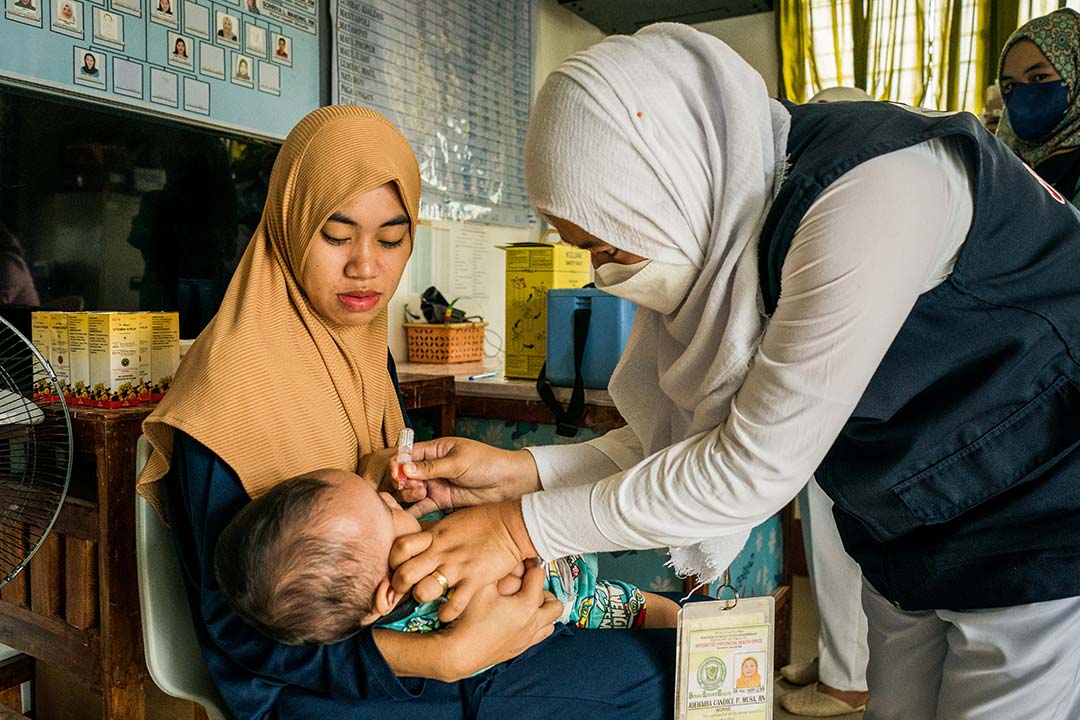Gavi, the Vaccine Alliance, UNICEF and WHO raise alarm over falling vaccine coverage and eroding trust, with measles cases at their highest since 2020
Manila/Bangkok/Geneva, 28 May 2025 – Across East Asia and the Pacific, vaccine-preventable diseases are making a dangerous comeback, with measles at the forefront of this resurgence. In the first months of 2025, countries like Cambodia, Mongolia, the Philippines and Viet Nam have reported a sharp rise in measles cases compared with the same period last year, signalling that far too many children are missing out on life-saving vaccines.
Measles is among the most infectious diseases in the world, with the potential to cause severe illness and death, especially in children. Since the beginning of 2025, Viet Nam has recorded 81,691 suspected measles cases in 63 provinces and cities. As of 21 May, Mongolia had confirmed 2,682 measles cases. Cambodia reported 2,150 cases of measles between January and April 2025. The Philippines reported 2,068 cases from 1 January to 10 May 2025. Measles cases across the region are now at their highest level since 2020, according to data from the World Health Organization (WHO).
“The alarming rise in measles cases is a wake-up call,” said Dr Saia Ma’u Piukala, WHO Regional Director for the Western Pacific. “It highlights the vulnerable children who are being left behind — those who haven’t received even a single dose of vaccine, living in underserved communities, missed by routine immunization and vaccination campaigns. This underscores the critical importance of ensuring every child is immunized to protect their health and that of our communities.”
Meanwhile, the confirmation of a poliovirus outbreak in Papua New Guinea has triggered a national public health emergency response. The risk of continued transmission within the country remains high, with potential implications beyond its borders. Although Papua New Guinea was declared polio-free 25 years ago, persistently low routine immunization coverage has left many children vulnerable.
Vaccine-preventable diseases remain a significant threat to children’s health. Measles can cause serious complications including pneumonia, brain damage and lifelong disability. Polio can lead to irreversible paralysis. The youngest children, especially those living in poverty, conflict zones, remote areas, or without access to basic health care, are most at risk and least likely to recover.
“We’re not just seeing a spike in disease, we’re seeing a signal that the systems meant to protect children are faltering,” said June Kunugi, UNICEF Regional Director for East Asia and the Pacific. “Measles and polio are highly infectious, and children are paying the price for gaps in coverage, delayed care, and misinformation. No child should suffer or die from a disease we know how to prevent.”
The resurgence of vaccine-preventable diseases in East Asia and the Pacific reflects deeper, systemic failures. Immunization systems weakened by the COVID-19 pandemic remain under-resourced. Across the WHO Western Pacific Region, an estimated 3.2 million children did not receive a single dose of vaccine between 2020 and 2023. Many more children remain under-vaccinated, and even countries with previously strong systems are now grappling with immunity gaps. These setbacks have left millions of children vulnerable to diseases that should already be under control or eliminated. Additionally, rising vaccine hesitancy – driven by misinformation, disinformation, and distrust – is further eroding the confidence families need to protect their children.
“We are very concerned about the rising cases of measles in the region,” said Sam Muller, Gavi’s Regional Head, Asia and Pacific. “Gavi is actively supporting response efforts in the region, including funding emergency vaccination campaigns, strengthening surveillance systems, and providing technical assistance to national immunization programmes. We are working with partners to bolster routine immunization systems and ensure children in hard-to-reach and cross-border areas are not left behind. The spike in cases underscores the urgent need for a coordinated regional response to stop transmission and protect millions of children.”
The cost of inaction is high: outbreaks demand emergency campaigns and intensive responses that are far more expensive than maintaining well-functioning, reliable routine immunization systems.
The tools to stop these diseases already exist: safe, effective, and affordable vaccines; early warning systems; and health workers with the skills and dedication to deliver them. UNICEF and WHO are calling for a shift from crisis response to prevention. That means:
- Reach every child with routine immunization and catch-up campaigns to close immunity gaps.
- Track risks and respond early with strong surveillance, laboratory capacity, and rapid outbreak response.
- Improve diagnosis and care with clear treatment protocols and infection control in health facilities.
- Build public trust by engaging communities, addressing concerns, and countering misinformation.
- Share timely information across countries to stay ahead of outbreaks.
- Ensure immunization programmes are adequately and sustainably resourced.
Critically, this work depends on sustained political and financial commitment.
“Global funding cuts will only put more lives at risk,” warned Kunugi. “Sustained funding – both domestic and international – is essential to protect children and prevent the return of diseases that should already be history.”
MEDIA CONTACTS
Meg Sharafudeen
+41 79 711 55 54
msharafudeen@gavi.org
Eunice Kilonzo-Muraya
+41 76 424 85 03
ekilonzo@gavi.org
Moumita Dastidar
Communication Specialist
+66 97 310 3779
mdastidar@unicef.org
WHO Western Pacific Region
Communications Team
+63 2 8528 9991
wprocom@who.int

